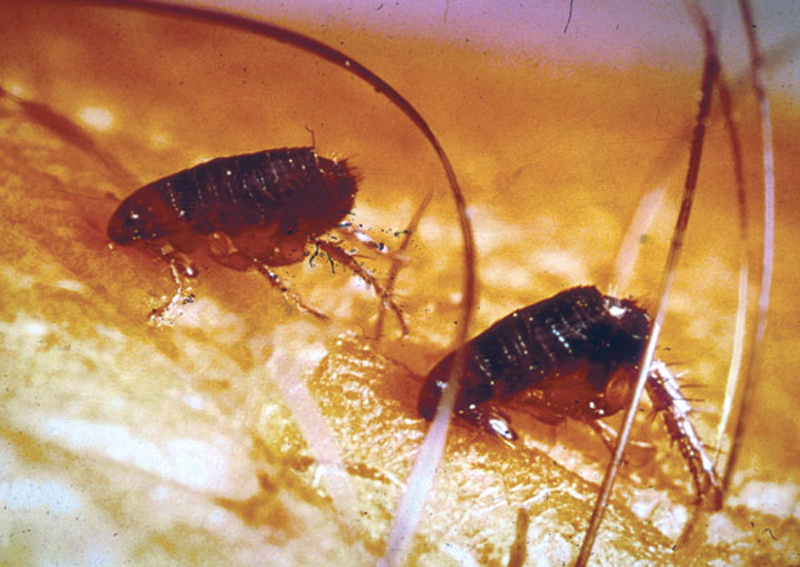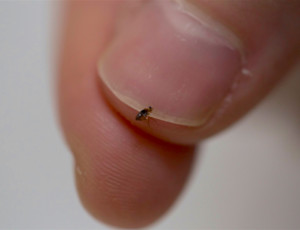Florida’s subtropical climate, renowned for mild winters and warm, humid summers, makes it a prime habitat for a wide array of pests. Among these, fleas pose an ongoing challenge for pet owners and property managers, feeding on animals and, occasionally, humans. If you own a home or run a business in Cape Coral or North Fort Myers, you may have encountered fleas seeking blood meals from dogs, cats, or unsuspecting people. These tiny parasites can cause itchy bites, potential disease transmission, and extensive discomfort if not contained quickly. This service page explains why fleas flourish in Florida, the indications that a flea problem might be present, and how professional flea treatments from a trained exterminator can eliminate them thoroughly. By responding promptly, property owners secure a calmer, healthier living environment and reduce the chances of fleas resurfacing over time.
Why Fleas Flourish in Florida

- Consistently Warm Temperatures
Many regions rely on cold winters to partially suppress flea activity. In Florida, mild or short-lived cool spells seldom kill or slow fleas. Indoors, air conditioning typically maintains moderate temperatures, enabling fleas to feed, breed, and develop nearly without pause. A single flea can therefore spawn countless offspring if left unchecked, especially when comfortable temperatures are sustained all year. - High Humidity
Flea eggs and larvae thrive in damp environments. Florida’s high humidity, along with periodic rainfall, helps maintain moisture in shady yards, leaf litter, or cracks in floors. This moisture fosters flea life cycles, letting eggs hatch and grow without drying out. Even slightly overwatered lawns or mulched flowerbeds might harbor fleas searching for new hosts. - Abundant Hosts
In southwestern Florida neighborhoods, homeowners often have one or more pets that regularly go outdoors. Dogs visiting dog parks or cats roaming yards can easily pick up fleas from other animals or from contaminated grass. Feral cats, opossums, and other wildlife occasionally passing through bring fleas onto properties, leaving behind eggs or adults ready to latch onto the next available host. - Minimal Seasonal Dormancy
In many northern states, fleas experience a break in breeding or significantly reduced activity during long, freezing winters. Florida’s climate rarely allows such a natural slowdown. Fleas remain moderately active, letting populations surge whenever suitable animals, people, or environmental conditions are present. - Frequent Movement and Tourism
Locations like Cape Coral and North Fort Myers see consistent influxes of travelers, new residents, or seasonal renters. Fleas easily travel in luggage, on clothing, or via secondhand furnishings. Even a single pregnant flea can establish an expanding population indoors if not noticed.
Telltale Signs of Fleas
- Pets Scratching or Biting Excessively
One of the earliest hints is a dog or cat incessantly grooming or scratching. Flea saliva irritates pet skin, leading to persistent itching, hair loss, or even flea allergy dermatitis if the animal is sensitive. Owners may see small black specks—“flea dirt”—on pet bedding or in fur, which turns red-brown when dabbed with water. - Seeing Fleas on Pet Fur
Adult fleas are about 1 to 3 millimeters long, typically dark-brown, and jump away quickly if disturbed. Using a specialized flea comb can help spot them near the neck, underbellies, or at the base of a pet’s tail. If you see a sudden movement of tiny, dark insects on your pet, fleas may have arrived. - Human Bites Around Ankles
Though fleas prefer animals, they bite humans if other hosts aren’t readily available. Bites often appear as small, red bumps around ankles or lower legs, frequently in groups or lines where fleas jumped. While not always dangerous, the resulting itching can be very uncomfortable, and some people may have stronger allergic reactions. - Flea Dirt in Home
Flea droppings, or “flea dirt,” looks like coarse black pepper sprinkled on pet beds, carpets, or under chairs. Tapping these black specks onto a white cloth and adding a drop of water often dissolves them into a reddish color (digested blood), confirming they’re from fleas rather than normal debris. - Excessively Active Yard Wildlife
Spotting stray cats, opossums, or other animals repeatedly passing through your yard can introduce fleas, especially in shaded or moist corners. Flea eggs or larvae might remain behind, waiting to latch onto pets or people crossing the same area later.
Consequences of Untreated Fleas
- Health Risks and Discomfort
Flea bites irritate skin, causing itching and possible infection if scratched aggressively. Pets may become anemic from blood loss if many fleas feed concurrently, and fleas sometimes carry tapeworms or other disease agents. Quick action spares animals and humans from ongoing discomfort. - Rapid Population Expansion
A single female flea can lay dozens of eggs daily, dropping them off wherever the host travels. Eggs hatch within weeks under Florida’s mild conditions. Without prompt extermination, fleas spread across rooms, carpets, upholstery, or yard corners, creating a more severe infestation that’s harder to clear. - Potential Transmission to Neighbors
In multi-family dwellings or close-knit neighborhoods, fleas may transfer between yards or units if animals roam outside or if shared laundries or hallways exist. Overlooking a small outbreak in one property can lead to wider community problems.
Constant Stress and Cleanup
Finding fleas on pets, clothes, or carpets fosters anxiety and disrupts daily routines. Occupants might repeatedly vacuum, wash bedding, or avoid certain rooms. Thorough, professional solutions bring relief, cutting the cycle of continuous cleaning with no real improvement.

Why Professional Flea Treatments Are Key
- Comprehensive Inspection
A trained exterminator checks indoor and outdoor spaces thoroughly, pinpointing flea hot zones—like pet bedding, cracks near floors, yard edges, or damp undergrowth. This complete overview ensures treatments focus on areas fleas are truly nesting. - Environment and Pet Synergy
Experts handle environmental flea elimination—using insect growth regulators or targeted sprays in carpets, yard corners, or behind furniture. However, occupant cooperation in pet care (with veterinarian-approved flea preventatives) remains vital. Pets roam indoors and outdoors, potentially reintroducing fleas if left untreated. - Safe, Targeted Applications
Indiscriminately spraying an entire home or yard can harm beneficial organisms or create undue exposure. Professional approaches precisely treat regions fleas favor (like shady yard corners or baseboard edges), minimizing occupant risks and maximizing contact with fleas and their eggs. - Breaking the Lifecycle
Flea eggs or larvae hidden in fabrics or soil can hatch weeks after initial treatments. Scheduling re-checks or follow-up visits ensures that newly emerged fleas are quickly eliminated. A repeated approach ensures eggs, larvae, pupae, and adults are addressed before re-establishing a population.
Methods Used by a Flea Exterminator
- Vacuuming Indoors
Vacuuming picks up fleas, eggs, and larvae from carpets, rugs, and upholstered furniture. Immediately disposing of vacuum contents in sealed bags outside prevents fleas from crawling back indoors. Repeated vacuuming also helps remove the debris (flea dirt) that larvae consume. - Steam Cleaning
Steam kills fleas at all life stages on contact, especially helpful for fabric, mattresses, or areas too sensitive for chemical usage. Exterminators may rely on this approach in tandem with insect growth regulators if chemical treatments alone may not fully penetrate cushions or plush surfaces. - Insect Growth Regulators (IGRs)
IGRs introduced to carpets or yard edges disrupt flea development, preventing eggs or larvae from maturing into biting adults. When applied properly, IGRs reduce the chance of new waves emerging after initial adult fleas die off. - Outdoor Yard Treatments
Many fleas originate outside, jumping onto pets who roam lawns or pathways. Applying larvicides or targeted sprays along shady fence lines, under decks, or in damp corners kills eggs and larvae before they reach adulthood. Reducing yard debris or thick vegetation also helps. - Pet Collaboration
While exterminators handle environmental treatments, owners must treat their animals. Veterinarians offer monthly flea preventatives—topical, oral medications, or flea collars—to kill fleas on pets. This synergy ensures newly hatched fleas cannot continue their life cycle on the same host.
Serving Cape Coral and North Fort Myers
Cape Coral: An area famous for extensive canals and a thriving boating culture, sees many visitors and frequent occupant turnover. Pets often roam yards or accompany owners on boat trips, encountering fleas that lurk in hidden corners. Quick detection and yard management help keep fleas in check, along with thorough indoor cleaning.
North Fort Myers: A quieter community mixing suburban and rural aspects, North Fort Myers might attract local wildlife passing through yards. Feral cats, raccoons, or opossums can deposit flea eggs in lawns, leading to an uptick in fleas biting pets or hitchhiking indoors. Consistent property checks plus occupant diligence hamper widespread infestations.

Why Our Flea Treatments Stand Out
- Tailored to Florida’s Climate
Because Florida’s warmth nurtures year-round flea breeding, our approach addresses fleas in all life stages, ensuring no dormant period spares them. We integrate environmental controls with occupant instructions on yard upkeep and pet treatments for lasting success. - Focus on Safety
Strategic usage of insecticides or insect growth regulators zeroes in on flea hot spots—like corners, carpets, or yard edges—while limiting occupant and pet exposure. We guide owners on re-entry times if certain products need drying or airing out. - Clear Prevention Tips
Removing existing fleas is half the equation. Our exterminator solutions underscore occupant roles: storing pet food securely, vacuuming frequently, washing pet bedding often, and ensuring yard moisture remains low. This synergy slashes re-infestation chances drastically. - Post-Treatment Checks
Because fleas may hide in pupae that hatch later, scheduling re-checks or continuous property monitoring helps confirm that no newly emerged fleas survive. If fleas resurface, immediate spot treatments secure full eradication.
Next Steps
Has your pet started scratching excessively, or have you noticed small, jumping insects on carpets or near doorways? Contact us to learn more or schedule your service. Our flea exterminator solutions in Cape Coral and North Fort Myers address every life stage of fleas—eggs, larvae, pupae, and adults—both indoors and outdoors, ensuring a comprehensive elimination that frees you and your pets from endless bites and discomfort.
Swift, professional treatments prevent fleas from spreading deeper into multiple rooms or yard corners, minimizing occupant stress and potential health concerns. Through a balanced mix of insect growth regulators, vacuuming or steam, and occupant collaboration on pet care, fleas lose their foothold. Reclaim your home’s comfort and let your pets roam free without the torment of hidden parasites lurking under rugs or behind furniture.
Sustaining a Flea-Free Space
After ridding an infestation, diligent upkeep keeps fleas from regrouping:
- Vacuum Regularly: Particularly in corners, under sofas, and around pet bedding. Discard the bag in a sealed plastic wrap outside the home.
- Wash Pet Bedding: Launder bedding on hot settings weekly and dry it thoroughly on high heat.
- Maintain Pet Preventatives: Veterinarian-endorsed flea collars, spot-on treatments, or oral pills ensure any new fleas on your dog or cat die before they can reproduce.
- Tend the Yard: Mow grass short, remove leaf litter, and minimize damp corners to hamper flea eggs and larvae. Limit the presence of stray animals by securing trash.
- Inspect After Travel: If your pet stays at kennels or you bring used furnishings home, check them for fleas or eggs. Quick detection cuts off fleas’ ability to spread indoors.
By merging these housekeeping strategies with a thorough professional approach whenever fleas reappear, southwestern Florida residents near Cape Coral or North Fort Myers sustain a calmer atmosphere free of incessant scratching, red welts, and the ongoing annoyance fleas inflict. A cohesive plan, occupant awareness, and timely expertise keep fleas at bay, making Florida living more enjoyable for families and their pets year-round.
